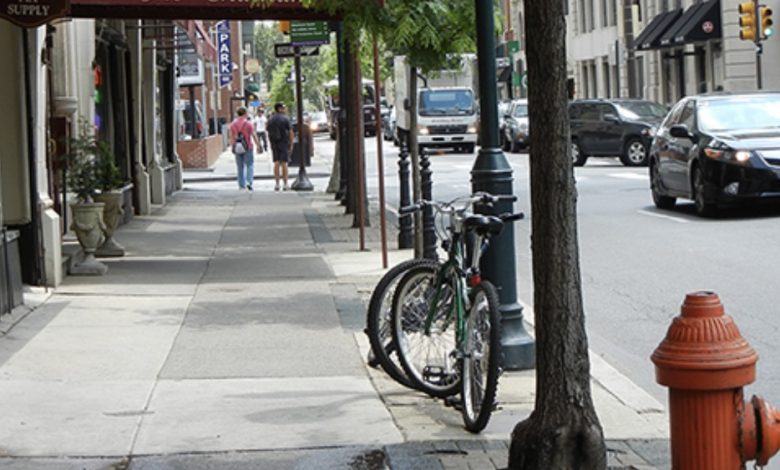Sidewalk and bicycle traffic

Sidewalk and bicycle traffic
Sidewalks (US usage) or pavements (UK usage) are often located alongside on one or usually both sides of the street within the public land strips beyond the curbs. Sidewalks serve a traffic purpose, by making walking easier and more attractive, but they also serve a social function, allowing neighbors to meet and interact on their walks. They also can foster economic activity, such as window shopping and sidewalk cafes. Some studies have found that shops on streets with sidewalks get more customers than similar shops without sidewalks.[7]
An important element of sidewalk design is accessibility for persons with disabilities. Features that make sidewalks more accessible include curb ramps, tactile paving and accessible traffic signals. The Americans with Disabilities Act requires accessibility improvement on new and reconstructed streets within the US.
In most jurisdictions, bicycles are legally allowed to use streets, and required to follow the same traffic laws as motor vehicle traffic. Where the volume of bicycle traffic warrants and available right-of-way allows, provisions may be made to separate cyclists from motor vehicle traffic. Wider lanes may be provided next to the curb, or shoulders may be provided. Bicycle lanes may be used on busy streets to provide some separation between bicycle traffic and motor vehicle traffic.
The bicycle lane may be placed between the travel lanes and the parking lanes, between the parking lanes and the curb, or for increased safety for cyclists, between curb and sidewalk. The
